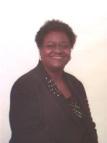|
John Wesley (1703-1791) was born at Epworth in Lincolnshire, England. His parents were Samuel and Susanna Wesley. His brother, Charles, was four years John’s junior.
John and Charles were both educated at Oxford University. In 1726, Charles entered Oxford. This was about the time John was completing his work there. John then left Oxford for Lincoln College where he had been elected a fellow. After John’s departure, Charles started the Holy Club while serving as a curate for Samuel Wesley. Upon his return, John became the club’s leader.1
The Holy Club was a group whose purpose was to “provide a disciplined method of spiritual improvement”. Club members met each evening for Bible reading and prayer. They also held regular private devotions.2 Discussions among club members concerned justification before sanctification and “the need for holiness in human living”. Club members preached to and prayed with jail prisoners, hovel paupers and “the underdogs of British society”.3
The term Methodist was first used at Oxford to refer to Holy Club members. Undergraduate students would jeer club members, calling them Methodists, Enthusiasts, Bible Moths or Sacramentarians.4 Club members were also called Bible Bigots.5
John was converted on May 24, 1738 at a meeting on Aldersgate Street in London, England. When a passage from Martin Luther’s Preface was read, John’s heart was “strangely warmed”. Charles was converted on Whitsunday.6
On January 1, 1739, John and Charles Wesley, George Whitefield and Benjamin Ingham attended a love feast held at Fetter Lane in London.7 Whitefield had been a Holy Club member at Oxford.8 At Fetter Lane, the Wesley brothers, Whitefield and Ingham ‘fellowshipped in the Spirit’. John wrote of the incident that followed in his Journal. He wrote,
“At about three in the morning, as we were continuing instant in prayer, the power of God came mightily upon us insomuch that many cried out for exceeding joy and many fell down to the ground. As soon as we were recovered a little from that awe and amazement at the presence of His majesty, we broke out with one voice, ‘We praise Thee, O God, we acknowledge Thee to be the Lord.’”9
Some writers of the Holiness Movement in the latter twentieth-century believed this experience was the occasion of John Wesley’s sanctification or Christian perfection.10
This experience at Fetter Lane is considered to be the confirmation of the coming of the Awakening. The Awakening was a time of spiritual renewal in English speaking churches that took place during the 1730s and 40s. In Britain it was called the Methodist Revival. In the North American Colonies it was called the Great Awakening.11
The Revival in England that was a part of the Awakening was a “work of the Holy Spirit”. It developed through the ministries of the Wesley brothers, George Whitefield and Benjamin Ingham. The Wesleyan ministry produced societies that eventually evolved into the Methodist Church. The Whitefield ministry was the key figure in Calvinistic mission efforts. The Ingham ministry was co-leader of Moravian ministry efforts.12
The Wesley brothers traveled across in England, preaching in pulpits whenever they were made available to them. However, when opposition made this impossible, they preached in market places or on commons so that crowds could hear. The brothers believed the people of Britain had to hear the good news of salvation and they attempted at all costs to give them an opportunity to do so. As a result, the working class people were drawn to the Christian faith13 and John Wesley was dubbed the “apostle of England”.14
As more and more people were converted through John’s preaching, there arose a need for a way to provide care for the converts. To meet this need, John organized Methodist Societies. These were companies of people who associated together to “help each other work out their own salvation”. Methodist Societies were an unofficial part of the Church of England because John had not departed from the church. However, these societies were needed because Anglican clergy were often careless and the church had little strength in industrial towns and cities.
John encouraged Methodists to attend Anglican services and sacraments and to remain in the Church of England. By 1743, the societies were organized into a Connexion. After John’s death, they emerged into the Methodist Church.
The headquarters of the Methodist movement was at a disused cannon-foundry in London. In 1778, City Road Chapel became the headquarters. Membership in the London society was open to persons who desired to “flee from the wrath to come, to be saved from their sins”. This was in contrast to existing religious societies that were restricted to persons who were attached to or in full communion with the Church of England. John opened the Methodist movement to nonconformists.
In 1742, John instituted “class meetings” within Methodist Societies. “Classes” involved every member of the society. They encouraged stewardship. Each member contributed a penny a week. Class leaders received the contributions and provided pastoral care.
In 1744, the Connexion was organized into a series of circuits. Circuits were preachers’ rounds. John’s Assistants supervised the circuits. The Assistants were chosen from experienced traveling preachers. In the absence of a parish minister, an Assistant fed, guided, taught and governed the flock. Eventually, Assistants were called Superintendents.
There were four doctrines of the Methodist movement. These doctrines were 1) justification by faith 2) “salvation is for all” 3) “assurance of the Holy Spirit” 4) “scriptural holiness”. Methodist preachers and members were committed to these doctrines.15
The doctrine “salvation is for all” was based16 on the theology of Jacob Arminius (1560-1609). Arminius was a Professor of Theology at Leiden. He rejected the theology of John Calvin that stated, “the elect were determined by the sovereign will of God alone” [predestination]. Arminius believed it is “possible to believe in God’s sovereignty while allowing for real free will in man”. He also believed “God [wills] all men to be saved and not merely the chosen”. [2 Peter 3:9]17
George Whitefield, a Calvinist, disagreed with the doctrine “salvation is for all”. Because of this disagreement, he “went his separate way”. However, he and John Wesley “kept in touch and helped one another from time to time”. Methodists who followed Wesley’s doctrine were called Arminian Methodists. Methodists who followed Whitefield’s beliefs were called Calvinistic Methodists.18
In 1784, a Deed of Declaration was drawn that provided for passage of John Wesley’s authority to the Methodist Conference upon his death. In 1787, the Toleration Act licensed locations of Methodist preaching. In 1795, after John’s death the Methodist movement became separate from and independent of the Church of England by the Plan of Purification.19
|

